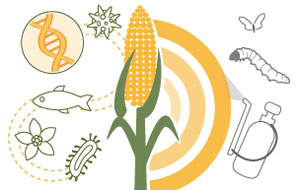Originally published August 10, 2013 at 5:30 PM | Page modified August 10, 2013 at 7:44 PM
What I-522 would require
Initiative 522 calls for genetically engineered food sold at retail to be labeled beginning July 1, 2015.
Seattle Times business reporter
The ABCs of GMOs

Kelly Shea / The Seattle Times
Click the graphic to learn more about genetically modified organisms
![]()
If Initiative 522 passes, raw agricultural products that are genetically engineered, and processed foods with such ingredients, will have to be labeled beginning July 1, 2015.
Agricultural products would be labeled “genetically engineered.” Processed foods would carry a label on the front of packages saying “partially produced with genetic engineering” or “may be partially produced with genetic engineering.”
Although the measure refers to genetic engineering, such crops are more commonly called genetically modified organisms, or GMOs.
Here are some key details:
• Food sold in restaurants is exempt, as are alcoholic beverages.
• Certified organic food, which by law can’t contain any deliberately added GE ingredients, is also exempt.
• Meat from animals that are genetically engineered must be labeled, but not meat from animals that ate genetically engineered feed.
• Food produced with processing aids or enzymes is exempt if those are its only genetically engineered ingredients. Until July 1, 2019, there is an exemption for processed food in which genetically engineered ingredients are 0.9 percent or less of the total weight.
• Genetically engineered seeds sold at retail also would be labeled.
Retailers, farmers and anyone else in the food business could be protected from liability if they have statements from either suppliers or an independent testing organization saying ingredients are not genetically engineered.
This is how enforcement would work:
• Penalties for violating the labeling requirement could not exceed $1,000 a day.
• If the state does not take action against an alleged violator, a person could sue 60 days after notifying the alleged violator and the state. State law already requires that to have standing in such a lawsuit, suing parties must show they experienced harm.
• A court could award a winning plaintiff costs and attorney’s fees incurred in investigating and prosecuting a lawsuit, but there is no provision for damages.
Melissa Allison: 206-464-3312 or mallison@seattletimes.com. Twitter @AllisonSeattle.











